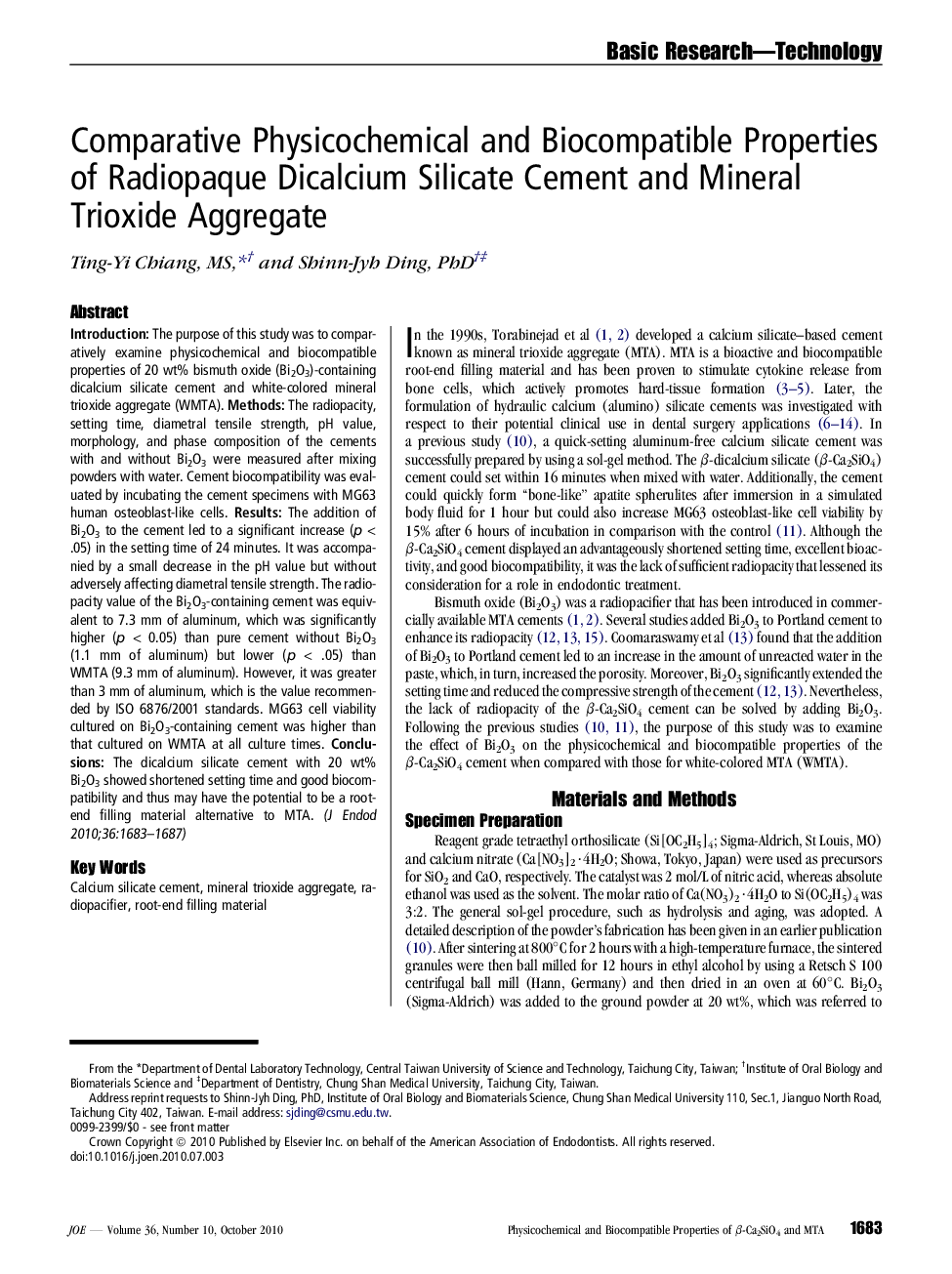| Article ID | Journal | Published Year | Pages | File Type |
|---|---|---|---|---|
| 3147191 | Journal of Endodontics | 2010 | 5 Pages |
IntroductionThe purpose of this study was to comparatively examine physicochemical and biocompatible properties of 20 wt% bismuth oxide (Bi2O3)-containing dicalcium silicate cement and white-colored mineral trioxide aggregate (WMTA).MethodsThe radiopacity, setting time, diametral tensile strength, pH value, morphology, and phase composition of the cements with and without Bi2O3 were measured after mixing powders with water. Cement biocompatibility was evaluated by incubating the cement specimens with MG63 human osteoblast-like cells.ResultsThe addition of Bi2O3 to the cement led to a significant increase (p < .05) in the setting time of 24 minutes. It was accompanied by a small decrease in the pH value but without adversely affecting diametral tensile strength. The radiopacity value of the Bi2O3-containing cement was equivalent to 7.3 mm of aluminum, which was significantly higher (p < 0.05) than pure cement without Bi2O3 (1.1 mm of aluminum) but lower (p < .05) than WMTA (9.3 mm of aluminum). However, it was greater than 3 mm of aluminum, which is the value recommended by ISO 6876/2001 standards. MG63 cell viability cultured on Bi2O3-containing cement was higher than that cultured on WMTA at all culture times.ConclusionsThe dicalcium silicate cement with 20 wt% Bi2O3 showed shortened setting time and good biocompatibility and thus may have the potential to be a root-end filling material alternative to MTA.
